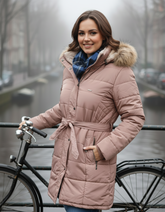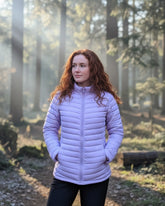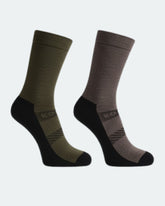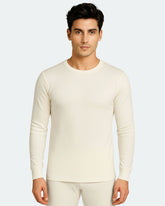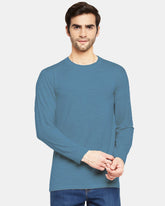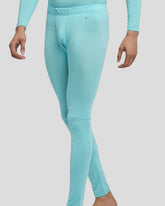To the Everest Base Camp! With ace climber, Jayesh Morvankar
This interview is a part of Prrems' fortnightly series where we feature a traveller and his or her work on our blog for the fantastic traveller community.

Jayesh Morvankar is an engineer and MBA but his soul has always been outdoors. He loved travelling and also loved introducing people to the outdoors. Having spent about five years in advertising, Jayesh quit and went on to pursue a course in Basic Mountaineering in March 2000 from Nehru Institute of Mountaineering (NIM). Post this, he founded Odati Adventures that organizes adventure trips and it has been thriving over the past decade. He has a rich experience of leading high altitude treks in isolated locations of Himalayas and he first visited the Everest Base Camp (EBC) region for the first time in 2012. He went on and did the EBC trek in 2013 for the first time and he about to head back again.
Since the peak season for the trek is now close, we decided to get in a chat with Jayesh to learn more:
Prrems: Tell us about the Everest Base Camp trek, how challenging is it?
Jayesh: Against people’s notion that EBC is a difficult trek, it can actually be graded as moderate because of the number of days and the conveniences available. It is a rather difficult trek but is laced with facilities. For instance, when you complete the trek, you get to stay in Tea Houses that have the comforts of a bed, blanket, common but clean toilets and an a-la-carte menu!
The minimum number of days for the trek from Kathmandu to Kathmandu is 15 days which includes 1 day for acclimatization in Namche Bazaar and 1-day reserve for flights in Kathmandu. It is challenging but if you have some experience with climbing, EBS is very much doable. Some of the key features of this trek:
- Height gains are not sudden which is good to acclimatize
- The views are very exciting, especially the flight into Lukla is the most thrilling with 10 to 12 people in the small Dornier Aircraft
- A chance to see some of the World’s highest mountains like Lhotse, Makalu, Timor, Cholatse apart from Everest itself
- The other thrilling part is walking on the glacier and reaching EBC.
Prrems: What kind of preparation is required for EBC?
JM: If someone leads an active lifestyle, then they are good to go. For others, it will help if you start some form of physical exercise like gymming or running 2 months before the trek. It is also important to include the load factor because you are carrying your day pack which is 5 to 6kgs in weight.
Health factors are more important than fitness. Ensure that you are in good health.
Personally, my preparation includes cycling of 20 to 30 km daily coupled with a 5 to 10km run.
Prrems: What kind of clothing would be required?
JM: Clothing depends a lot on what time of the year you go for the trek. The crowd generally starts in the first week of April. Before this time period, so it’s time to carry some heavy-duty winter wear (obviously Kosha ☺). Post 1st week of April, one has to take protection from the rain.
For the trek itself, the 1st half of the trek can be done in shorts. Then you’d need Thermal Wear for Women, balaclava or monkey cap, a mid-layer which can be peeled off and a Wind Breaker Jacket.

For Kalapather (one of the peaks close to EBC), you definitely need the fleece and good quality gloves apart from thermals.
You also require sturdy and waterproof shoes and Woolen Socks for Women.

Prrems: Awesome! So, what comes to your mind when we say, ‘travel’?
JM. Trying to fall off the map, breach boundaries and explore places no one has been to before. My interests are for wild isolated country, sculpture, adventure, not necessarily beach or mountains.
Prrems: How do you prefer to travel?
JM: I like to go solo the first time around. That joy is something else. Once the solo trip is done, I like sharing experiences on coming back and would re-visit the place to enjoy it in the company of others.
Prrems: What’s your travel wish list for the summer?
JM: Once I’m done with EBC again, the Chola pass and Gokyo lake are next on the list. I also want to explore the Amazon for three months and also the forests of Malaysia.
Prrems: Our wanderlust is already growing! What would your travel tips be?
JM: a) When you pack, pack everything, then discard half at home. This way, you are taking the quantity that you can carry. And in case of emergency, the exit is easy. You don’t waste time getting together all your belongings.
b) Keep moving i.e. in case of an emergency, don’t wait for someone to come and rescue you. Try to reach the base camp or the main area as soon as possible.
c) Save up days for return. I believe in the Hub and Spoke method. eg: When I travelled to the Great Himalayan National Park, our return tickets were not booked. Instead of looking for a direct connection from Chandigarh to Bombay which was full of all modes of transport, we looked at options from Chandigarh to Delhi. Delhi-Jaipur, Jaipur-Ahmedabad and Ahmedabad-Bombay which are all popular routes with multiple transport options. That way, with every step, you are getting closer to home.
Website: Kosha.co, write to us at yuktie@prrems.com if you'd like to nominate yourself or someone else for our "Featured Traveler" segment.
Editor’s Picks
Alaskan Parka Jacket For Women - Slim Fit
- ₹8,925.00
₹11,900.00- ₹8,925.00
- Unit price
- / per
Lightweight Packable Puffer Jacket For Women
- ₹5,040.00
₹8,400.00- ₹5,040.00
- Unit price
- / per
Alaskan Parka Plus Size Jacket For Women
- From ₹10,125.00
₹13,500.00- From ₹10,125.00
- Unit price
- / per
Woolmark Full Sleeves High Neck Thermal Top For Women
- From ₹1,845.00
₹1,845.00- From ₹1,845.00
- Unit price
- / per
Men's Pack Of 2 Merino Wool Cushioned Technical Socks
- ₹2,148.00
₹3,580.00- ₹2,148.00
- Unit price
- / per
